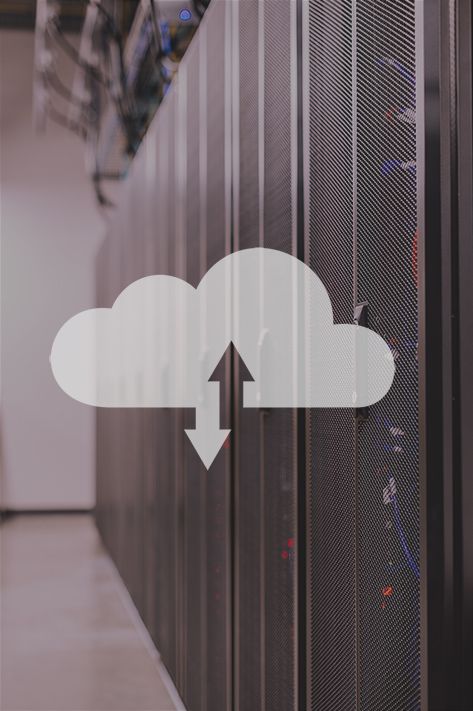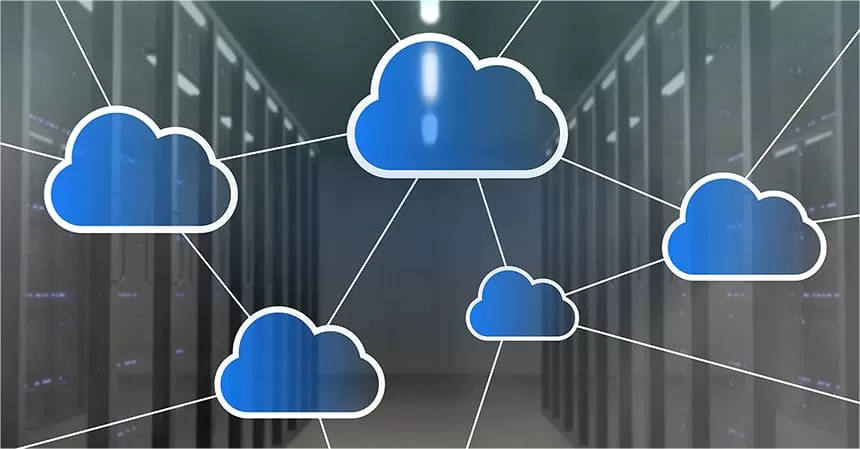Currently, the media and entertainment industry is still grappling with the decision of whether to adopt cloud or not. However, exponential growth over the years in content production and consumption coupled with welcome technological advancement from 8K to XR have caused file sizes, and therefore storage cost, to skyrocket.
At this juncture, Cloud storage solutions will be the way out as it enables companies to store and manage vast amounts of data and content in a scalable, secure, and cost-effective way. No wonder, broadcasters are slowly but surely moving from on-premises storage to cloud one. Definitely, this technology is here to stay.

Are you a production company, broadcaster or any other stakeholder in the media and entertainment industry for that matter? Then it is all the more important for you to wholly go through this blog to take an informed decision on your future storage system.
Know the Cloud Storage
Simply put, Cloud Storage is data storage capacity made available over the cloud, dispensing with the need for own data centers. The storage provider ensures anytime accessibility of the data on its servers via public or private internet connections.
Users can gain access to data in the storage through an internet connection and software such as a browser, or mobile app via an application programming interface (API)
Types of Cloud Storage
We can gain a fair understanding of the tiers of storage with just a bare perusal of the characteristics of each of the tiers and the nature of data that they contain.
Tier I (Hot) storage is meant for mission-critical or highly sensitive files and are accessed with high frequency and therefore has high access speed. Tier II (Warm) Storage is meant for periodic reporting and the speed & access requirement is far less than that for Tier I storage. Tier III (Cold) Storage is archived data and is accessed rarely, therefore the access speed required is least among the three tiers saving cost.
The transfer of data within the tiers can be automated according to the custom requirements: technological advancement facilitates the same.
The several benefits & the single surmountable challenge
Cost effective storage: Eliminates the need for expensive on-premises storage systems. Companies can store large amounts of data and content on cloud-based servers, paying only for the storage they use, i.e., pay-as-you-go.
Improved Collaboration: It allow team members to access and collaborate on files from anywhere, anytime. This has been particularly beneficial for media and entertainment companies with remote teams or multiple locations.
Enhanced Cloud Storage Security: Cloud service providers provide a high level of security for stored data and content by offering robust security features such as encryption, access control, and data backups.
Easy Access: Authorized team members can easily access stored data and content anywhere, anytime. This has been particularly beneficial for media and entertainment companies that need to distribute content to multiple locations or devices.
Scalability: Offers scalable storage options, allowing media and entertainment companies to increase or decrease their storage capacity as needed.
Disaster Recovery: Enables broadcasters to achieve a new level of flexibility . And this creates new efficiencies and cost-savings, while meeting security and disaster recovery (DR) demands.
It would be impossible to manage, store, and deliver such a large amount of content without the use of cloud computing applications.
The singe surmountable challenge: A bottleneck for moving to cloud storage could be the cost factor. Placing the content in high resolution with a cloud provider comes with an operational expense commitment. But broadcasters can get around this by engaging a System Integrator like RGB Broadcasting that benefits from lower costs as economies of scale kick in.

Advantages of Cloud over On-premise
There is no need to maintain your own data centre when you have cloud storage. But if you go with on-premises storage, your own hardware is to be maintained, and with that comes an increased risk of data loss.
Cloud storage automates the backup process, if required. The back-up is not automated, and that would mean additional responsibility pulling for your IT support team from their core area.
Scalability is near elastic for Cloud based storage whereas for On-premises it requires planning, involves investment, and really cumbersome.
Hybrid Cloud Storage for media & entertainment professionals – A third option
Hybrid Storage refers to a mixed storage environment using both local and off-site premises. The media and entertainment companies are inclined to move to a hybrid cloud storage solution as they need scalable storage without compromising on speed. Though Hybrid Storage is costlier than going for a single storage option, it can help you recover data lost in the event of a natural disaster.
Relevance of cloud solutions in the media & entertainment industry.
The Media and Entertainment Industry is continually developing, producing, and distributing new content in order to stay relevant in the competitive content creation and content distribution world. The industry is already leveraging Cloud to make use of its collaborative capabilities and shared resource space.
Cloud-based media asset management can improve your digital asset capabilities. On a different note, Cloud Storage Solutions enable remote collaboration on the broadcast content.
Optimized storage infrastructure and intelligent data media for hybrid media workflows greatly assist in streamlining production environment. While Content Delivery Network (CDN) brings speed in content delivery, an integrated cloud will fetch the flexibility and scalability required for scaling the content.
From a business standpoint, the cloud creates significant cost efficiencies while creating new opportunities to enhance content and expand a broadcaster’s offering to the end user.
Is cloud storage secure?
It would be safe to say that cloud storage is secure.
The security concern stems from the fact that the cloud server on which your data is stored is not in your control. However, the data on cloud storage is safer than the data you save on your computer’s hard drive.
Own storage would be more prone to phishing and malware, however, these risks are avoided when cloud storage is employed.
The reliability of the cloud based storage is cemented by the robust cybersecurity measures taken by the Cloud service provider to protect your data.
As the warehouses are inaccessible to the workers, and since the storage of the files in the encrypted form to keep cybercriminals at bay, your data in cloud storage is secure. When data is on your devices, the hackers might try to siphon information

Migrating to the new normal, Cloud– how-to
Overall, cloud storage solutions provide media and entertainment companies with a flexible, cost-effective, and secure way to store and manage their data and content.
With the demand for faster access to entertainment growing all the time, the broadcasting industry will witness the migration of a great number of companies to cloud solutions in the years to come.
RGB Broadcasting, as a leading cloud broadcasting solutions provider, is helping companies accelerate their growth by improving collaboration, reducing costs, enhancing security, providing easy access, and enabling scalability. If you wish to explore migration of your company to a cloud model, RGB can always help you!
FAQs
Off-site servers mean there can be no hard-drive failure hence no expensive data retrieval. This disaster recovery turns out to be the foremost advantage of cloud storage. Other advantages are collaboration, storage scalability, pay-as-you-go option, better data security, and elimination of expenditure on software licences.
A couple of disadvantages are the security threat to be dealt with and the unsuitability to all business needs. However, the benefits of cloud storage far out-way the potential costs.



